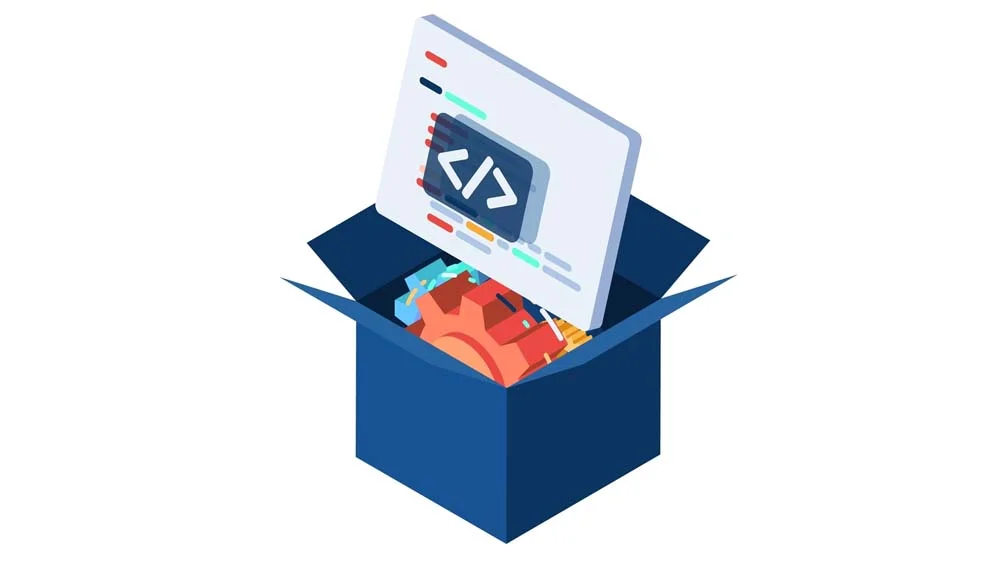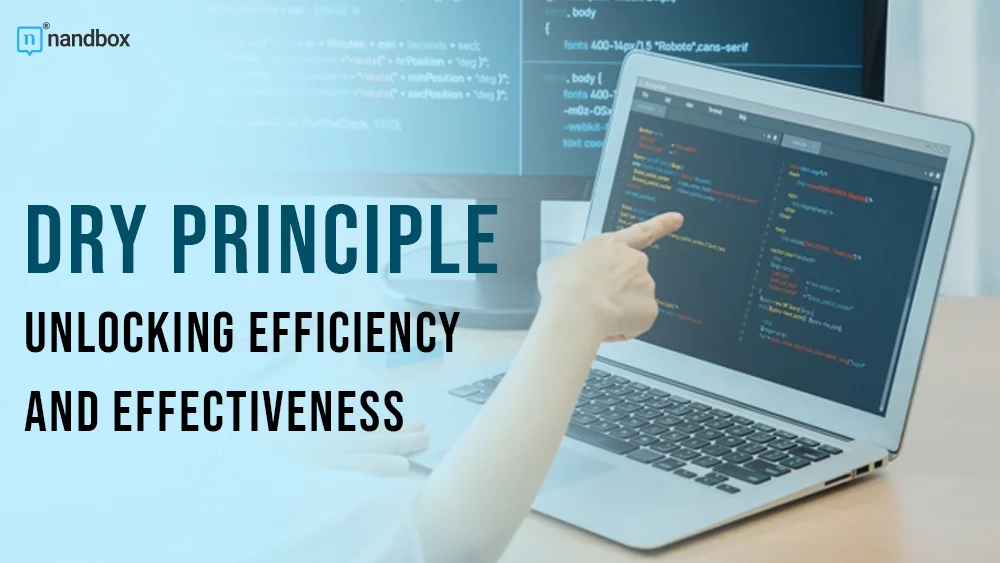As a person, what is your first and foremost aim? Well, that is a tough question, because there could be a lot of things, and the answer is limitless. Some people can say that their main aim is to have a stable life, and some strive to have everything better. Well, this has taken a deep turn, but I’m making a point, I promise. Now, for software development, there is a foremost aim as well. It is to have well-functioning, error-free software. Developers put in a lot of effort over the course of weeks and months to achieve this goal. This may pose a major problem or have an unachievable purpose. However, in the advanced technological realm, nothing is ever impossible. And the answer is DRY! as in the opposite of soaking wet? Well, WET is also one of the ways, but let us focus first on the DRY principle. In this article, we will demonstrate one of the most important software development principles, DRY. We will explore its definition, how it is used, and its advantages and drawbacks.
What is the DRY Software Development Principle and How Did It Start?
So, what exactly is DRY software development? Sure, we know a lot of drys, dry briskets, and dry towels, but dry software? This seems a tad odd. This is because dry here doesn’t refer to a state, as it does with other tangibles. DRY software development is an acronym for “Don’t Repeat Yourself,”, which is a major and essential principle for software developers. Let us start with the origin of such a term. The DRY principle originated and emerged sometime in 1999. It was demonstrated in the programming book “The Pragmatic Programmer.” Andrew Hunt and David Thomas are two well-known authors and programmers who wrote this book. The two programmers came up with this principle after much research and experience with it, and they were also inspired by the experience of other programmers and software developers. They demonstrated not only the principle but also techniques and tools that help improve it. This book is what paved the way for this principle, along with many others that we will explore later in the article. Since then, the implementation of this principle has been a fundamental task for many software developers. The main purpose of the principle of DRY software development is that every single logic in the software should have a single representation. This means that clean code should be written for each function or place rather than duplicating a single code everywhere in the software.
Advantages of the DRY principle
The DRY (Don’t Repeat Yourself) principle is a fundamental concept in software development that encourages the avoidance of repetition and redundancy within code. Embracing the DRY principle offers several advantages:
Maintainability
Since only one location of the code needs to be updated, the DRY code is simpler to keep up to date. This decreases the likelihood of overlooking modifications across numerous lines of code and makes modifications more efficient.
Readability
More straightforward, more concise code is often the result of redundancy elimination. This improves the readability and understandability of the codebase for any future developers who may need to make improvements to it.
Reduced Error Rates

Errors can occur when code is duplicated in different places and one is updated without correspondingly updating the others. With DRY, you only need to remember one set of rules, which greatly reduces the chances of making mistakes and causing bugs.
Consistency
The DRY principle helps to ensure that the codebase is consistent. You may verify that the same function is applied consistently throughout different parts of the program by reusing the same code in each of those areas.
Scalability
When it comes to writing code, adhering to the DRY principle often results in an improvement in scalability. Reusing components or functions rather than duplicating them makes it easier to maintain control over the system’s complexity.
Time and Cost Efficiency

Since DRY coding necessitates the development of elements and codes that may be reused, it may take extra effort to get started. In the long run, however, it saves time and effort in codebase maintenance, updates, and enhancements, which in turn lowers overall development expenses.
How Does the DRY Principle Work and How to Implement It?
As we previously mentioned, the main purpose that developers should extensively focus on in the DRY software principle is to create clear and reusable codes for different places in the software. These components or codes can then be used in places with common functionality or logic. This opposes a major mistake or a wrongful strategy that developers usually follow, which is duplicating codes everywhere in the software. This is nowhere near the idea of reusing code, as it only includes copying and pasting the code in different places. Many developers follow this technique because they see it as much easier. The way that the DRY principle works and gets implemented is very similar, as the process of implementation explains how the whole thing goes.
Identify Code

The first step of this process is identifying duplicate code. This includes analyzing all the codes present in the functions in your software and pinpointing repetitive ones.
Choose Your Strategy
The second step includes choosing the best strategy to get rid of this duplication and maintain a clean and well-established codebase. These strategies include modularization, which means breaking codes into reusable components. They also include refactor codes. Refactoring is the process of cleaning, restructuring, and improving codes without changing their core functions.
Document Your Process
The third step of this principle is documentation. To be able to keep up with the software development process, documentation is a must. This includes keeping everything in the development process and codes documented cleanly. This helps developers, as documentation acts as a reference they can go back to in case of any problem.
Keep Improving
The last step of the DRY principle is continuous improvement and maintenance. The process of adopting the DRY principle is never-ending. New duplication may appear as a codebase develops. You can maintain the code’s DRYness by inspecting and refactoring it regularly. Following these guidelines and best practices can help developers effectively apply the DRY principle, resulting in more efficient, clear, legible, and maintainable code.
Drawbacks of the DRY Principle
While the DRY (Don’t Repeat Yourself) principle offers numerous benefits. There are certain scenarios or approaches where strict adherence to this principle might introduce some drawbacks or challenges:
Over-Abstraction
Excessive adherence to DRY might result in highly abstracted code that is difficult to understand. The code could become more difficult to understand, especially for inexperienced developers, if abstraction is done too soon or in excess.
Increased Indirection
It’s possible to have too much indirection and indifference when striving toward DRY. As a result, the code becomes less readable as it may require the developer to move through several levels of abstraction before reaching the core operation.
Increased Learning Curve
Strict adherence to DRY can lead to excessive complexity, which can make it harder for new developers to pick up the ropes. Particularly for newcomers to the codebase, grasping the numerous levels of abstraction and common elements can become very difficult.
Maintenance Overhead
When trying to rigorously adhere to DRY, it is possible that this could result in the development of code that is excessively generalized or abstracted. This will take more maintenance and could be more difficult to debug.
DRY vs WET: The Leads of Software Development Principles
Well, we have previously established how significant the DRY principle is. We have also learned everything about the DRY principle, or the Don’t Repeat Yourself principle, and how to implement it. So, now let us ask a question: are there any other software development principles that we need to know? Actually, there is an abundance of software development principles that could take days to learn about. But for now, let us start with DRY’s greatest competitor. WET, or Write Everything Twice, is the ultimate antagonist of the DRY principle. It opposes everything that the DRY principle aims for. The WET principle calls for less abstraction and complexity, which are major challenges of the DRY principles. The principle encourages using duplicating codes, as it can save much time and effort. For instance, when designing a UI interface, what is the point of writing a special line of code for each button when you could just copy and paste? That makes a great point, but just like the DRY principle, the WET principle can have its drawbacks and is not always suitable. This is why, before applying any of the principles, you should always take your requirements, tools, and timeline into consideration.
En Fin
The DRY (Don’t Repeat Yourself) principle serves as a guiding light in the world of software development. By adhering to this fundamental concept, developers can reduce redundancy, enhance code maintainability, and create more efficient and scalable software solutions. Embracing DRY encourages code modularity, abstractions, and encapsulation, ultimately leading to cleaner, more readable, and easily maintainable codebases. In a digital landscape where time and resources are precious, following the DRY Principle isn’t just a best practice; it’s a strategic choice. It empowers developers to build software that’s not only robust and dependable but also cost-effective in terms of development and maintenance.








